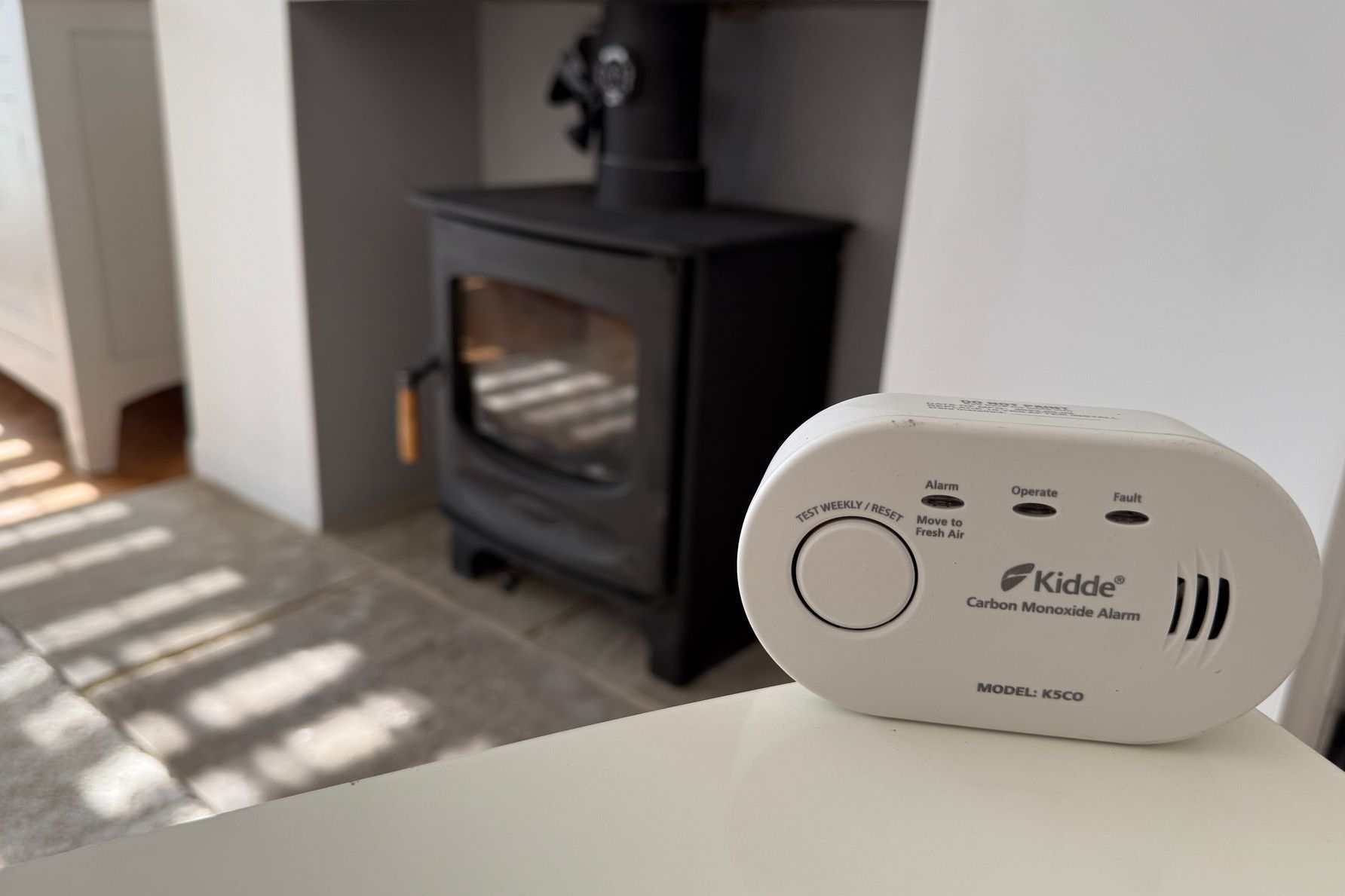Be Moore Secure
What is Carbon Monoxide and how do we detect it?

Carbon monoxide (CO) is a silent killer—an odourless, tasteless, invisible gas that can be deadly if undetected. Every year, thousands of people in the UK are admitted to hospital due to suspected carbon monoxide poisoning. Thankfully, properly installed and maintained carbon monoxide detectors are a simple yet vital way to protect your home or business.
But CO alarms don’t last forever.
In this post, we’ll cover why CO detectors are essential, how often they should be replaced, and the regulations that guide their use—whether you’re safeguarding your family or complying with workplace safety standards.
Why Carbon Monoxide Detectors Matter
Carbon monoxide is produced when fuels such as gas, oil, wood or coal do not burn fully. Faulty boilers, gas appliances, wood burners, or blocked flues and chimneys are all potential culprits.
Without a functioning carbon monoxide alarm, it’s nearly impossible to detect a leak before symptoms set in—headaches, dizziness, nausea, confusion, and in extreme cases, death.
A CO detector is your first line of defence.
Where CO Alarms Are Required
In the UK:
- Homes: Under the Smoke and Carbon Monoxide Alarm (Amendment) Regulations 2022, landlords must ensure at least one carbon monoxide alarm is installed in any room used as living accommodation which contains a fixed combustion appliance (excluding gas cookers).
- Businesses: While the law does not always mandate CO alarms in all commercial premises, duty of care under the Health and Safety at Work Act 1974 means employers must protect staff from foreseeable risks—including carbon monoxide exposure.
- Care homes, schools, hotels, and offices with gas appliances or fireplaces should install detectors in accordance with BS EN 50291-1 (for domestic settings) or BS EN 50291-2 (for caravans and boats, often cited for non-domestic applications).
When to Replace a CO Detector
Most carbon monoxide alarms have a lifespan of 5 to 10 years, depending on the make and model. After this time, the sensors degrade and can no longer detect gas accurately.
Here’s how to stay safe:
- Check the expiry date: It’s usually printed on the back or side of the unit.
- Replace immediately if the alarm is damaged, exposed to excessive moisture, or if it fails a test.
- Regularly test your detector—once a month is ideal.
- Replace the battery annually (unless you have a sealed unit, which should still be tested).
If your alarm starts to beep intermittently and it's not a low battery alert, it may be nearing the end of its life.
Choosing the Right Carbon Monoxide Alarm
When purchasing a new detector, always look for the British Standard BS EN 50291 certification mark and a CE mark to ensure it meets UK safety regulations.
You can choose from:
- Battery-powered (replaceable or sealed-for-life lithium)
- Mains-powered with battery backup (often preferred in commercial settings)
- Smart detectors with mobile alerts and integrations (increasingly popular in both homes and offices)
Carbon Monoxide Protection for Businesses
In business settings, especially where staff or customers may not be familiar with the signs of CO poisoning, it's critical to go beyond compliance:
- Install alarms in boiler rooms, kitchens, plant rooms or anywhere with gas or solid fuel appliances.
- Combine with regular gas safety checks and maintenance.
- Consider integrating detectors into building management systems or fire and security setups for complete peace of mind.
Summary: Don’t Take the Risk
Whether you’re a homeowner, landlord, or business owner, carbon monoxide detectors save lives—but only when they’re working properly.
If you’re unsure hw old your CO alarms are, don’t wait for a fault to appear. Replace them today, and stay protected.
For expert installation, maintenance, or replacement of carbon monoxide detectors, contact the team at Moore Secure.
We’ve been protecting homes and businesses across the North West and the South since 1988
